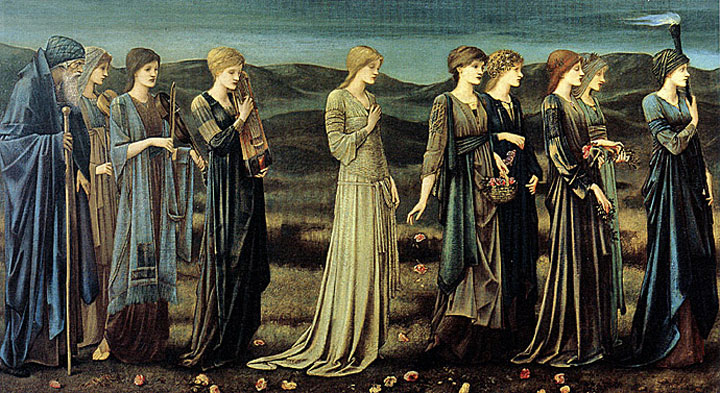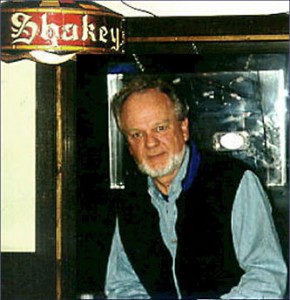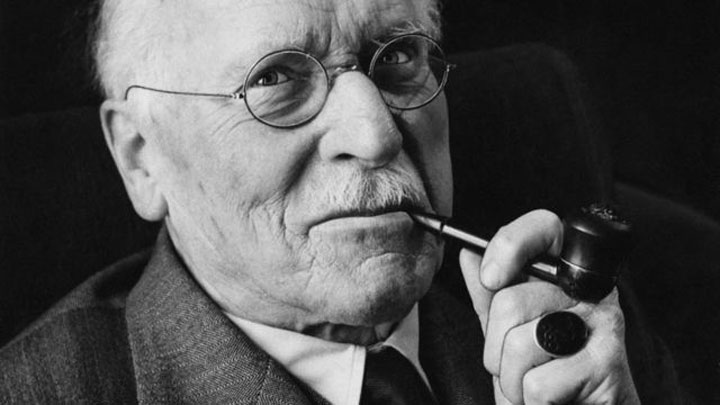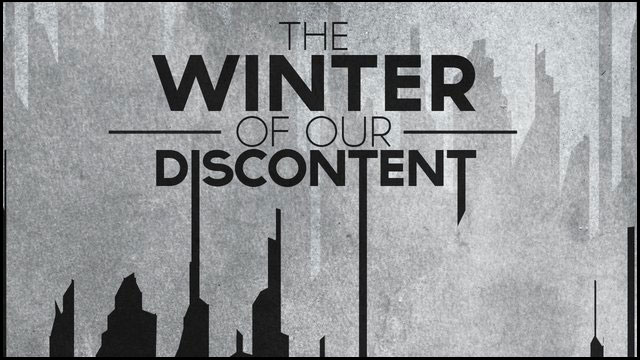 As an instructional designer in business and industry I had the responsibility for preparing employees to face critical and risky tasks—ones that demanded courage and flawless creativity. It is a fact that most risky tasks are handled alone and not by a team or committee. To meet the challenges, I had to replace the usual classroom experiences with new training methods that considered the whole work environment. My methods were built on the ideas of the psychologist Carl Jung that were applied so well by John Steinbeck in his fiction and non-fiction, including Cannery Row, Sweet Thursday, The Log From the Sea of Cortez, The Moon Is Down, and East Of Eden. What follows continues the line of inquiry in my most recent post.
As an instructional designer in business and industry I had the responsibility for preparing employees to face critical and risky tasks—ones that demanded courage and flawless creativity. It is a fact that most risky tasks are handled alone and not by a team or committee. To meet the challenges, I had to replace the usual classroom experiences with new training methods that considered the whole work environment. My methods were built on the ideas of the psychologist Carl Jung that were applied so well by John Steinbeck in his fiction and non-fiction, including Cannery Row, Sweet Thursday, The Log From the Sea of Cortez, The Moon Is Down, and East Of Eden. What follows continues the line of inquiry in my most recent post.
Like Carl Jung, John Steinbeck understood the principle well, as shown in a letter to John O’Hara, his friend and fellow writer:
“I think I believe one thing powerfully-that the only creative thing our species has is the individual lonely mind. Two people can create a child but I know of no other thing created by a group. The group ungoverned by individual thinking is a horrible destructive principle. . . . “
As a result of my study, it became very clear to me that while individuals were facing creatively demanding tasks alone, the physical and social environment in which the creative effort must be undertaken influences job-holder perception, judgment, problem-solving, and decision-making—and inevitably, success or failure.
Carl Jung, Cannery Row, and the Human-Persona Divide
In my assignments as a training program developer, I became curious about the influences of the work environment on the individual. My goal was to create a richer and more realistic learning experience. I had years of independent study of Carl Jung and was aware of his influence on John Steinbeck’s fiction and non-fiction. Both inspired my efforts and spurred my curiosity.
As a result of reading Jung and Steinbeck, I began to understand why particular types of individuals seem to gravitate to certain jobs. For example, the personality difference between the engineer- and customer service and marketing-types is typically dramatic. What did John Steinbeck have to say about this particular human-persona divide? It seemed obvious to me that the Cannery Row character Doc would not have made a successful sporting house manager like Dora, and that Mack would have been a poor replacement for Doc in the role of Caretaker for the Row. Strong characters all, but hardly interchangeable.
Delving deeply into The Log From the Sea Of Cortez—John Steinbeck’s collaboration with Ed Ricketts, the model for his Cannery Row character Doc—I was struck by the idea that a person’s social and physical environment is no more random than that of the tide pool creatures described by the authors:
“We wanted to see everything our eyes would accommodate, to think what we could, and, out of our seeing and thinking, to build some kind of structure in modeled imitation of the observed reality. We knew that what we would see and record and construct would be warped, as all knowledge patterns are warped, first, by the collective pressure and stream of our time and race, second by the thrust of our individual personalities. But knowing this, we might not fall into too many holes-we might maintain some balance between our warp and the separate thing, the external reality.”
A Cannery Row-Sweet Thursday Human-Type Continuum
A training program, physical environment has purpose, patterns, lessons, and consequences like those imposed by the surrounding tide pool environment on a biological specimen. The life in a peaceful, safe, and unchallenging tide pool may actually impede species evolution and survival. The microbes that infect us evolve and strengthen in response to antibiotics designed to kill them. Grapes from a difficult growing season often produce superior wine. Trainees who survive a practical-and stressful- learning environment may likewise perform better than others on the job.
Consider the social environment and social impact upon the denizens of Cannery Row in Sweet Thursday, John Steinbeck’s sequel to the earlier novel:
“To a casual observer Cannery Row might have seemed a series of self-contained and selfish units, each functioning alone with no reference to the others. There was little visible connection between La Ida’s, the Bear Flag, the grocery (still known as Lee Chong’s Heavenly Flower Grocery), the Palace Flop house, and Western Biological Laboratories. The fact is that each was bound by gossamer threads of steel to all the others—hurt one, and you aroused vengeance in all. Let sadness come to one, and all wept.”
Or, by contrast, the following passage from Cannery Row:
“The previous watchman was named William and he was a dark and lonesome-looking man. In the daytime when his duties were few he would grow tired of female company. Through the windows he could see Mack and the boys sitting on the pipes in the vacant lot, dangling their feet in the mallow weeds and taking the sun while they discoursed slowly and philosophically of matters of interest but of no importance. Now and then as he watched them he saw them take out a pint of Old Tennis Shoes and wiping the neck of the bottle on a sleeve, raise the pint one after another. And William began to wish he could join that good group. He walked out one day and sat on the pipe. Conversation stopped and an uneasy and hostile silence fell on the group. After a while William went disconsolately back to the Bear Flag and through the window he saw the conversation spring up again and it saddened him. He had a dark and ugly face and a mouth twisted with brooding. The next day he went again and this time he took a pint of whiskey. Mack and the boys drank the whiskey, after all they weren’t crazy, but all the talking they did was “Good luck,” and “Lookin’ at you.” After a while William went back to the Bear Flag and he watched them through the window and he heard Mack raise his voice saying, “But God damn it, I hate a pimp!” Now this was obviously untrue although William didn’t know that. Mack and the boys just didn’t like William.”
Individual Levels in John Steinbeck’s The Moon Is Down
Just as examining a biological specimen in its surrounding tide pool yields greater information than isolated examination in a laboratory, we can learn more about individuals by studying them within their physical and social environment than in solitude. Conceptual tools such as Carl Jung’s functional and attitudinal types and Jim Kent’s Gathering Place Roles (discussed previously in this series) further expand our horizon. Deeper drilling reveals why particular Jungian functional types and attitudes will gravitate naturally to specific Gathering Place roles.
As noted in the first of these blog posts, human beings range in maturity from simple, unconscious types to highly evolved individuals who are conscious about and in control of their lives. Now I would like add my observations about groups made up of members who have not achieved higher maturity:
1. If there is any social structure at all, the social body will be vertically directed by leaders who have realized how easy it is to influence the citizens to do their will, usually for selfish and evil reasons. “Tell the population anything and repeat it many times and they will believe it” (Adolf Hitler paraphrased).
2. Less-evolved citizens who have not awakened to the possibility of their unique self and self-direction and will easily surrender their freedom to father or mother figures, real or imagined, and remain unaware of the resulting personal cost.
3. Such followers do not actively direct their lives beyond providing for the basics of assuring food, shelter, and procreation.
4. They project upon external gods, including father and mother figures, and are closed to suggestions from outside the social group: all thinking has been entrusted to the mother or father figure.
5. Total leader-control is possible simply by publishing of a list of “ought-and-must” dictates.
6. The leadership will be threatened by anyone who refuses to surrender his or her freedoms. Given the usual absolute power of the leaders, it is simple to incite mass or MOB confrontation against those who threaten challenge or change, sometimes cruelly and violently.
Where individuals of higher maturity comprise the group the following can be observed:
1. The leadership unselfishly serves its citizens.
2. “Ought-and-must” dictates are almost useless to control the citizenry comprised of higher-evolved individuals.
3. The life of the citizens has more potential for happiness and completeness.
4. Within this positive and loving environment, interpersonal struggles will persist because everyone will not agree on every issue. There is a noticeable difference between interpersonal struggles within a loving social environment and the ones where there is virtual sibling-rivalry for the father or mother figure’s attention. Adolf Hitler actually encouraged such confrontation among his leadership.
5. Highly evolved individuals have learned that there is more in play in themselves than mere ego and have begun to explore and integrate newly discovered psychological territory. This is perhaps the most important step to becoming a complete individual.
6. The collective power for good often exceeds what would be anticipated from apparent resources. Unexpected strength and adaptability will come out of the positive and powerful phalanx of more mature individuals.
In The Moon Is Down, John Steinbeck portrayed a community of evolved (per my recent post, Level 3 and Level 4) men and women, dramatizing the power of such a phalanx in response to occupation by father-figure representatives of a distant and despotic leader. The Nazi spokesman advises the mayor to “think for” his people:
“’It is your duty to protect them from harm. They will be in danger if they are rebellious. We must get the coal, you see. Our leaders do not tell us how; they order us to get it. But you have your people to protect. You must make them do the work and thus keep them safe.’ Mayor Orden asked, ‘But suppose they don’t want to be safe?’ ‘Then you must think for them.’ Orden said, a little proudly, ‘My people don’t like to have others think for them. Maybe they are different from your people. I am confused, but that I am sure of.’”
With the various levels of individual evolution in mind, consider the history of freedom-loving Scotland with the citizens being served by the Stewart monarchy. Go back further, to the Britons and King Arthur—John Steinbeck’s ideal of dedication to duty and chivalry. Fast forward to the Ottoman Empire, where the rights of all religions were guaranteed by proclamation. Consider the social environment surrounding the Library at Alexandria—destroyed by Christians—where citizens of all cultures, ideals, and creeds mingled and freely shared their knowledge and wisdom.
Needs Analysis and Jung and Steinbeck’s Human Factor
In my instructional design career I was responsible for providing training in tasks as simple as completing personnel time records and as complex as monitoring and controlling complicated electric generating-station systems. As noted, my programs were also used to prepare teams of consultants to influence and support communities that were facing challenges. In many cases, my job required the analysis of complex systems and processes, human-to-system interface, and interpersonal and social issues, using Needs Analysis to define the gap between existing competency levels and those needed to do the job with greater expertise.
Needs Analysis provide the necessary information to design training models, proposals, and justification, cost-benefit, and standards. Technical and complex-process analysts normally have abundant technical and process data available for their task. But complex critical-skill competencies also include personal and interpersonal components such as individual jobholder style, strengths, weaknesses, creativity, perception, judgment, and decision-making, problem-solving, risk-management skills.
But the analyst’s intellect is as critical to the success of the process as the technical tools developed in preparation for the act of training. Yet the humanities side of the training is all too often ignored in the process. The briefest examination of technical-owner manuals shows how poorly qualified most computer programmers and engineers are to write useful guides for the non-technical user. Worse still, to an experienced instructional designer, the engineer’s boast that he has emulated the cognitive processes of the human mind in designing artificial intelligence and expert systems for human use is laughable at best.
When I awoke to the need for a more holistic critical skills-training perspective, little was available to guide me in the human elements of the equation beyond publications by psychological behaviorists such as Thomas F. Gilbert and Robert Mager. But their view was limited to statistically defined and empirically observable behavior and ignored the influence of individual will and social environment. In my opinion they were uninterested in the factors that form our uniqueness and individual creativity. To develop a more complete program I knew that a broader perspective was required, providing a bigger window from which to analyze work processes and standards in greater depth and detail.
The program developers I managed were almost exclusively specialists and technical experts inexperienced in or ignorant of the humanities. To do a more thorough job, their subject-matter expertise needed bolstering with knowledge of human factors, attributes, and cognitive functions. Failure to consider these essential elements within the context of a given task accounts for many problems, notably in military training, pilot training simulation, nuclear power plant operation, ship navigation, and other life-and-death tasks. The 1979 near- disaster at Nuclear Generating Station Number Two on Three Mile Island is a dramatic example of this danger.
Was John Steinbeck Right About Religion and Freedom?
But was John Steinbeck always right about the individual? In the forward to a later edition of A Russian Journal he was quoted: “The great change in the last 2,000 years was the Christian idea that the individual soul was very precious.” I disagree, and I think Steinbeck knew better. Historically Christianity has cruelly suppressed individual behaviors and beliefs that appeared to challenge official doctrine and church control. In this regard, it is a religion with much company in the parade of human history.
The suppression of individual freedom remains an impediment to the general improvement of the human condition. As Steinbeck showed in The Moon Is Down, the simple act of raising individual consciousness from Level 1 to Level 2 improves the quality of the collective. In East of Eden, written 10 years later, the original sin isn’t eating the apple of the tree, suggesting that Eden was incomplete without self-knowledge—the real fruit of the forbidden tree. Eve is denigrated by the religious for taking that first bite of freedom. To the contrary, I am convinced that Adam benefitted from the reported act of her original disobedience. I suspect that John Steinbeck agreed.
“It is, I think, exceedingly easy to define what ought to be understood by national honor; for that which is the best character for an individual is the best character for a nation; and wherever the latter exceeds or falls beneath the former, there is a departure from the line of true greatness.” (Thomas Paine)
This is the third in Wesley Stillwagon’s series on the application of John Steinbeck and Carl Jung’s insights in innovative corporate training program design. To be continued.






